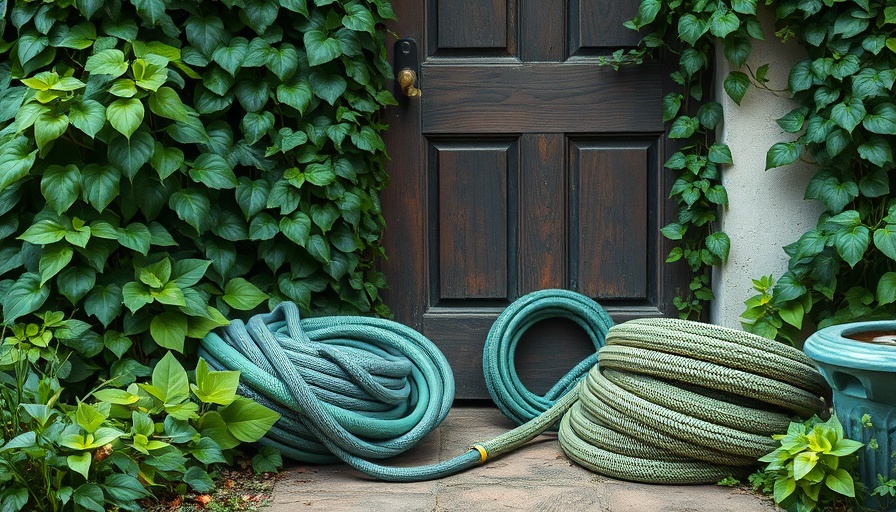
Elevate Your Gardening Game: Must-Have Tool Upgrades
Spring is just around the corner, a time of renewal, growth, and gardening excitement. As we await those warmer days to get our hands dirty, it's the perfect moment to assess our gardening tools. Whether you're a novice gardener or a seasoned pro, upgrading your tools can significantly improve your gardening experience, enhancing efficiency and enjoyment.
Essential Upgrades for the Season
According to recent insights, investing in quality gardening tools can transform your gardening tasks from mundane to delightful. Five standout tools are gaining popularity this season: the Felco pruners, a reliable watering system, an ergonomic trowel, durable gloves, and a multifunctional garden knife. These tools represent not just improvements in performance but also a boost in your overall gardening pleasure.
Unpacking the Garden Tool Essentials
Let’s dive deeper into why these tools are essential for any avid gardener:
1. The Felco Pruning Shears: Cutting Through the Competition
When it comes to pruning, having the right tools is paramount. The Felco 2 pruners, often acclaimed for their precision, are versatile enough to tackle everything from delicate flowers to sturdy branches. Their hardened steel blades ensure clean cuts, promoting plant health. Not only do they ease the burden of garden maintenance, but they also contribute to improved plant yields.
2. Ergonomic Trowels: Your Best Friend for Soil Manipulation
Every gardener needs a reliable trowel. The ergonomic design of modern trowels minimizes strain on your wrist, making those digging and planting tasks much easier, especially for long gardening sessions. Look for trowels with measurement markings for consistent planting depths — a small detail that can make a big difference!
3. Quality Garden Gloves: Comfort and Protection
Protecting your hands while maintaining dexterity is crucial in gardening. Quality garden gloves, such as those made from breathable nitrile, ensure comfort while handling various gardening tasks. Plus, they shield against thorny plants and rough edges, allowing you to work without fear of injury.
4. The Versatile Garden Knife
Often underestimated, a garden knife is a multi-tasking essential. Its uses span from weeding to planting and even dividing perennials. A well-designed garden knife can streamline your gardening process, reducing the number of tools you need to carry.
5. Efficient Watering Systems
A good watering system, such as the high-quality hoses and nozzles, is essential for nurturing your garden efficiently. Lead-free and cadmium-free hoses prevent contamination, ensuring your plants thrive without exposing them to harmful substances.
Leveraging Technology in Gardening
Interestingly, the introduction of smart technology tools, such as programmable watering systems, can significantly enhance your gardening effectiveness. Integrating tech with gardening can assist with efficient water use, making it easier to maintain healthy concentrations of moisture in your soil.
Future Trends in Gardening Tools
Looking ahead, as more gardeners embrace sustainability, expect advancements in tool design focused on eco-friendliness and durability. This trend includes preferences for materials that are not only rugged but also environmentally responsible.
Why Quality Tools Matter
Ultimately, the right tools can be the difference between a frustrating gardening experience and a fulfilling one. Quality, ergonomic tools not only enhance your gardening efficiency but help prevent injuries as you work. Connect with expert advice and tips to make informed decisions that will improve your gardening practice.
Conclusion: Get Ready for a Productive Gardening Season!
As we prepare for a new season of planting, take a moment to invest in your gardening tools. Whether you opt for the finesse of premium pruners or the ease of a state-of-the-art ergonomic trowel, your garden will reflect the care and effort you put into your preparation. Stay inspired, and let your enthusiasm guide you through this growing season!
Join the gardening revolution by ensuring you have the tools you need for success! Embrace the season and elevate your gardening game with these essential upgrades today!
 Add Row
Add Row  Add
Add 




Write A Comment